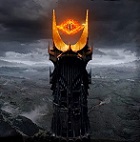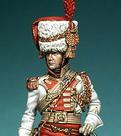BletchleyGeek
Posts: 4713
Joined: 11/26/2009
From: Living in the fair city of Melbourne, Australia
Status: offline

|
quote:
ORIGINAL: Red Lancer
@ Bletchley_Geek
Thanks for the post. I will try and answer most of your questions within the leeway that I have (I’m able to give an semi-official slant on where we are – so what I say may be wrong or changed at a later date.)
The forums software has eaten up my answer to your answer twice already... let's see if I am more lucky with the third attempt.
Thanks for your answers, I appreciate the time you took to write it.
quote:
ORIGINAL: Red Lancer
The first thing to highlight is that the origins of the WitE2 code started when WitW split from the original WitE code. I guess that this was probably 2 years before morvael began his changes. This means that morvael’s changes have had no direct impact on WitE2. This may fill you with horror but many of the changes and bug fixes that morvael has made were never required as the code had already moved on. There is a view that WitW was just WitE in the west and WitE2 will be WitW in the east. Nothing is further from the truth. The games are evolutionary.
I am not horrified, but still surprised. Expecting that Morvael's code can be patched "right away" into the WITE 2 codebase is certainly unrealistic. On the other hand, I want to believe that the effects of the changes made in the combat engine of WITE over the past two years are taken on board to inform the development of the titles currently under development. After all, Morvael's revision has been "tested" by probably 100 times more people than WITE2 has beta testers.
quote:
ORIGINAL: Red Lancer
Much of my responses question whether it is worth the effort. It is one thing to ask for a change and yet another to deliver it. Many changes are not simple to deliver as decisions on the structure of the code made a decade ago present serious challenges now. What might appear simple takes many hours reworking the entire game data structure. Last night I asked Pavel to make a change to the colour coding of text in the editor. I hope it’s simple and it will make my life much easier but every second he spends doing it (if he does) is a second not spent working on the code elsewhere.
I concur that having Pavel doing that is a waste of his time. What wouldn't be a waste of his time would be to ask having trivial, cosmetic settings such as the one you mention exposed via configuration files read at startup, so non-programmers can modify them. Nowadays companies like Firaxis make public huge swathes of their UI code for people to customize: see the recent issues with scrolling being hardcoded in the latest iteration of Civilization, and how one can "fix" them by modifying the UI code themselves. 2by3 isn't Firaxis, but a more humble goal and an easy win could be to have those configuration files in ini, json or yaml format for people without access to the source code to tweak settings.
quote:
ORIGINAL: Red Lancer
I agree in part with your comments on morale, fatigue and experience. This is an area in flux and we may yet change the term morale. I disagree on providing a complete breakdown on how the factors interplay. For one I think the effort is too much and secondly I think it runs counter to the nature of warfare. I think you might be surprised how much fatigue does play a role in the combat iteration of the combat engine and you can already see this with WitW. It is now supplemented by the combat preparation rules and of course sufficient supply is also a vital factor.
Twenty years ago I played the heck out of this strategy game. It wasn't the deepest of war games, nor the one with the most moving parts. But I remember fondly the way it described how battles played out, using concise sentences, almost a lyrical - and sometimes comical - understatement of the events simulated by the game. For instance, a particularly bad combination of "maneuver" (frontal attack, flanking attack, ambush, etc.) and terrain/weather would be described by a sentence like "your heavy infantry had trouble negotiating the thorny brambles while flanking the enemy, who saw us coming from miles away" or something to that effect. What was the specific way it affected the outcome of the battle (that is, either it was a win, a draw or a loss, and how many casualties were suffered for each of the 6 different TOE slots available in combat units in that game)? Who knows, and who cares really if the combat power of the enemy militia tripled or my heavies strength halved. King of the Dragon Pass also used similar devices to great effect.
What I meant is that WITE and WITW are very good at showing people numbers, and very bad at conveying meaningful information about how combat (or other aspects of the game such as logistics) play out. I do appreciate the more verbose situation logs of Morvael too, I just hope he had the same flair for the whimsical that the MEPBM writers had. The point is that one wants to make sure that the most important factors following from the gameplay (i.e. stuff the player can affect in some manner) that affected the outcome of the event (battles, for instance) are clearly spelled out. Whether they had a positive or negative impact is useful, but that info will be already ambiguous. I think that is a low tech, and potentially more effective approach than having people poring over sequences of numbers that change dramatically between patches or runs of the game as the seed of the RNG changes.
quote:
ORIGINAL: Red Lancer
As I said earlier WitE2 is evolutionary. Even with retaining some of the same key components, development takes a number of years. Much is gained by utilising experience from previous work and understanding how changing some of the key inputs work. Another key factor is delivering a game with a top quality AI. Many players don’t want to PBEM. The more vocal members of the community are PBEM players and that can lead forum readers to a skewed view on where priorities lie.
I am pretty sure that AI only players do like as well that the AI plays with the same rules they do. Striving for an AI that depends less on scripting and more on dynamically choosing goals on the basis of victory conditions and the current situation, and develop operational plans to achieve them would definitely put something new on the table.
Some notorious PBEM only players have tried - for years - to lobby the games development with varying degrees of success. In any case, other than the occasional virtual columns of smoke rising from the forums, I think that I enjoy more reading and laughing about the drama that ensues some times than I feel outraged by the juvenile antics that some supposedly grown up adults engage in while on the Internet.
quote:
ORIGINAL: Red Lancer
In response to your questions:
Thanks for taking the time to go over them!
quote:
ORIGINAL: Red Lancer
1) We won’t be moving away from 1 week turns but we are doing all we can to reduce the burden on the player. The creation of ‘Air Divisions’ is all about simplifying the control of multiple air groups.
Okay, I put this one first because I knew it was the one which isn't going to happen any time soon.
quote:
ORIGINAL: Red Lancer
2) I would argue Hasty Attacks are already the default. The combat engine in WitE2 is producing a very different game to WitE.
About time to start a developer's blog of sorts?
quote:
ORIGINAL: Red Lancer
3) Already the case – and we introduced Hex Combat Delay in WitW.
Did you already go that way with fortifications? When did that happen? Is Hex Combat delay related to the duration, intensity and existing defensive works (i.e. minefields).
quote:
ORIGINAL: Red Lancer
4) I presume you mean when units are next to each other in a hex and not as part of the combat routine. ZOC costs already provide a penalty. It is also difficult at this scale to do something like this. Is it worth the effort?
Computer wargames where this has ever mattered was in John Tiller's Panzer Campaigns where leaving ZOCs was impossible because of massive costs unless the enemy units were dislodged (which required forward planning but quite sound actually) or Norm Koger's TOAW "active disengagement" rules (which were a bit arbitrary, but worked). How big were those "features"? Not very big, but certainly avoided divisions (motorized or not) from waltzing away like the first ballerina of the Bolshoi.
quote:
ORIGINAL: Red Lancer
5) This is not valid at a game of this scale and probably impossible to teach the AI.
Hmmm, I do not understand either of the answer to this one. What is wrong with forcing the enemy to defend over an extended frontage? Say the defender "force" is 1, if it has to cover the perimeter corresponding to two or three hexsides. Then there needs to be some "stretching" of a limited resource (combat power). That can't be good for the defender, I find hard to think of cases where the defender is guaranteed to be able to withdraw and avoid being defeated in detail... This is an old argument, about which I had mixed feelings five years ago, and now I think the game cries for it.
When you say "impossible to teach" you mean "hard to get coded", right?
quote:
ORIGINAL: Red Lancer
6) The retreat code is already horrendously complex. I question whether we really need more now we have combat delay.
Let me put it in another way.
The current way you portray the collapse of command, control and discipline of combat units in trying circumstances, strikes me as horrendously unrealistic, as it hopelessly warps the relationships between time and space in an operational context. It also forces you guys to come up with more or less arbitrary rules to avoid unrealistic, hopelessly warped strategic outcomes, that result in hugely complicated code made up of intricately nested conditional statements which are exceedingly hard to debug and maintain 
quote:
ORIGINAL: Red Lancer
7) This has been discussed at length and I don’t know what the final answer will be. I think we would like to do it but the cost/benefits on development and game play are not as clear cut as you may think.
I tend to think that the less arbitrary the rules, the happier the player tends to be and the less undesired trickle down effects in the design of the game appear. That may require an UI with an scrollable section on the right-hand pane too.
quote:
ORIGINAL: Red Lancer
8) The game is essentially at the Divisional level. I question what this is actually going to add to the gameplay. We have only 32 slots per TOE so a change of this magnitude would take many months of development. That doesn’t just mean the code but also redoing all the hundreds of TOEs.
To the gameplay, not much. It is meant to provide with structure to the combat engine (this structure dictated by the typical unit of maneuver at the operational level, which I consider the battalion or battalion-equivalent to be in World War II) so you can simulate better a dynamic process like that of combat between divisions and corps over frontages of 10 to 30 kilometers and extended periods of time (days). Also, you can generate a narrative as you go around an operational war game set on World War II, without resorting to gimmicks like painting the OKH as a raucous establishment more chaotic than a saloon in Deadwood, South Dakota in the late 1870s. Which could be a fair comment about how things played out, but another discussion 
quote:
ORIGINAL: Red Lancer
Finally you say you lost interest in WitW because the ‘Italian Campaign’ was boring. Well it was historically I’m afraid. I’m not sure whether to take that as a criticism or a compliment.
I only play hotseat since a very long time ago. So that one was self-inflicted in two different ways: I chose to play the part of Sysyphus and against a quite determined opponent too 
Edit: muddled sentences, I was a bit exasperated with the forums.
< Message edited by Bletchley_Geek -- 10/31/2016 8:58:39 PM >
_____________________________
|
 Printable Version
Printable Version

















 New Messages
New Messages No New Messages
No New Messages Hot Topic w/ New Messages
Hot Topic w/ New Messages Hot Topic w/o New Messages
Hot Topic w/o New Messages Locked w/ New Messages
Locked w/ New Messages Locked w/o New Messages
Locked w/o New Messages Post New Thread
Post New Thread